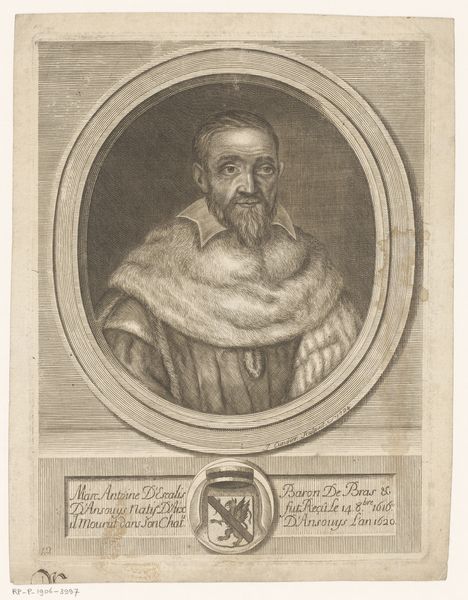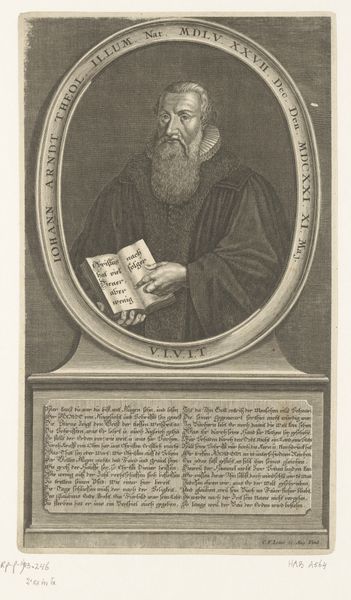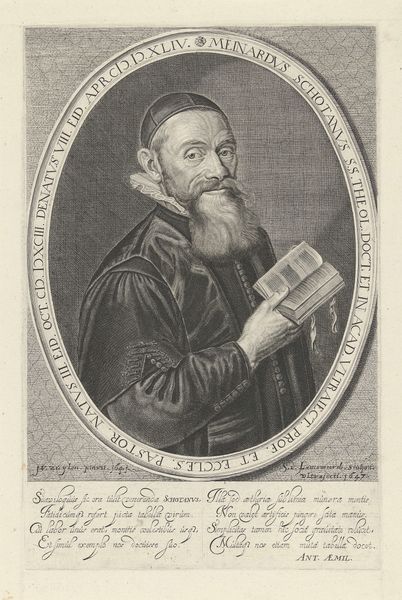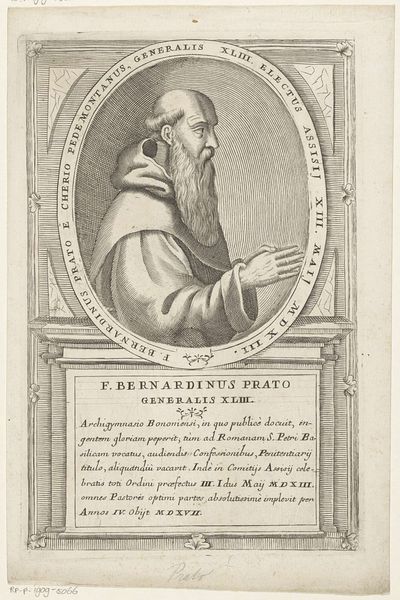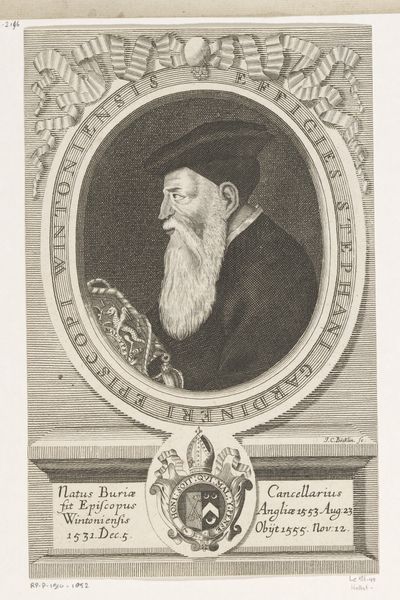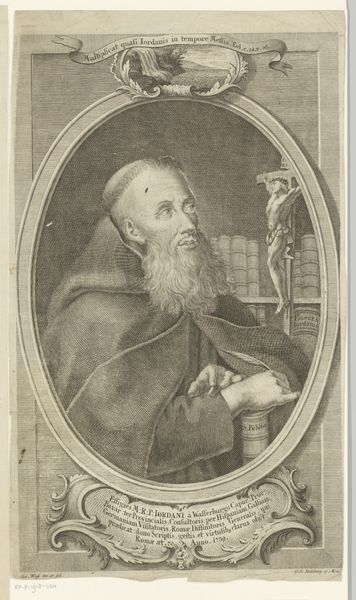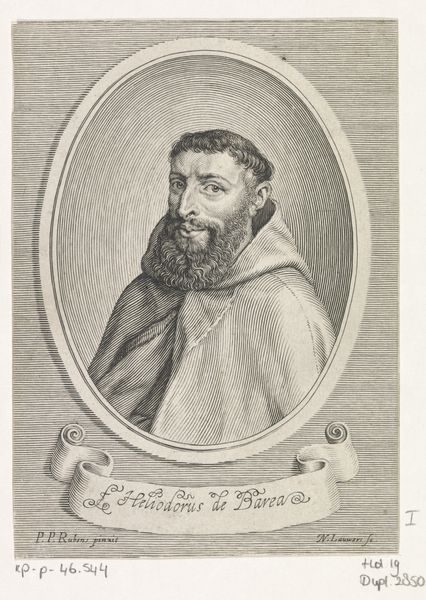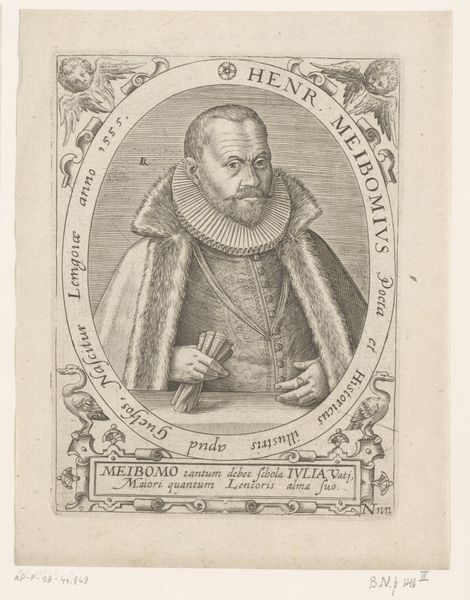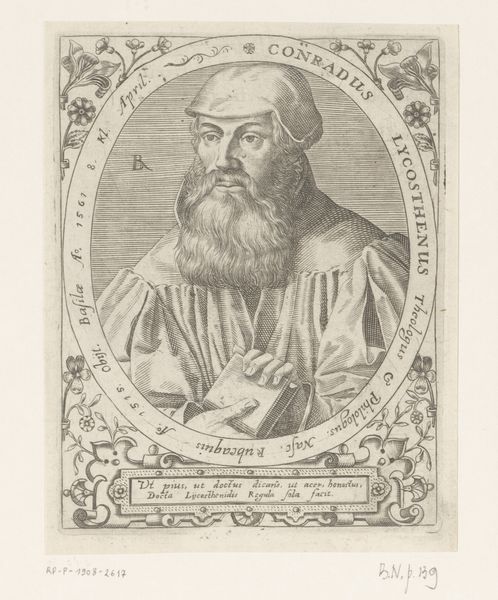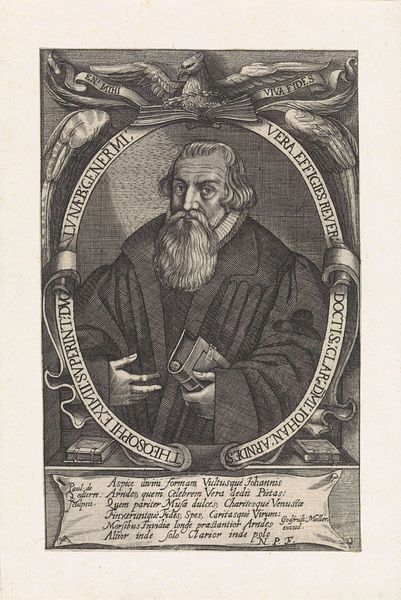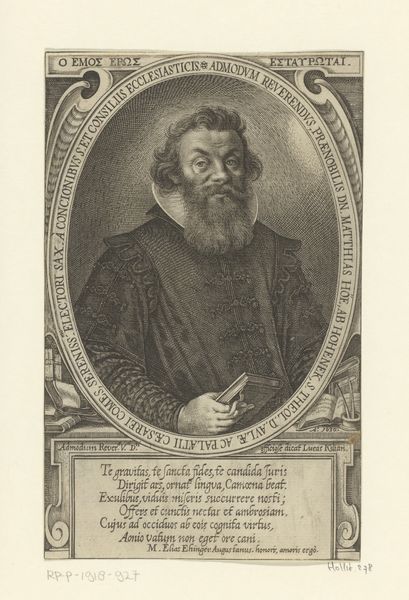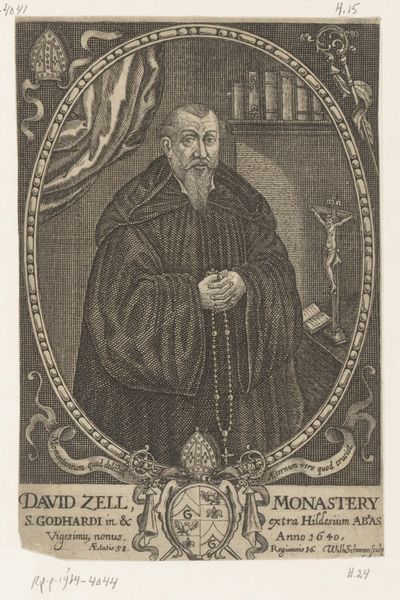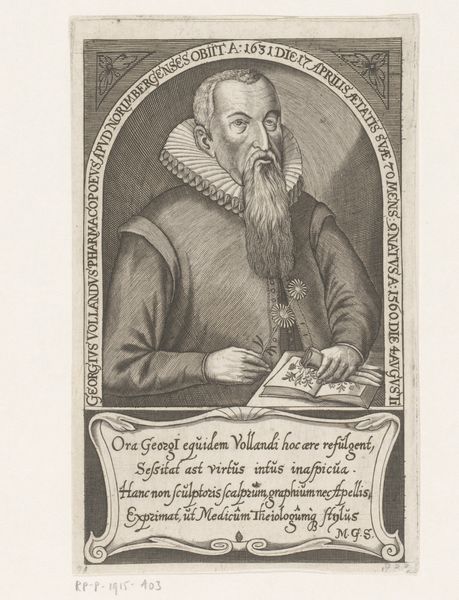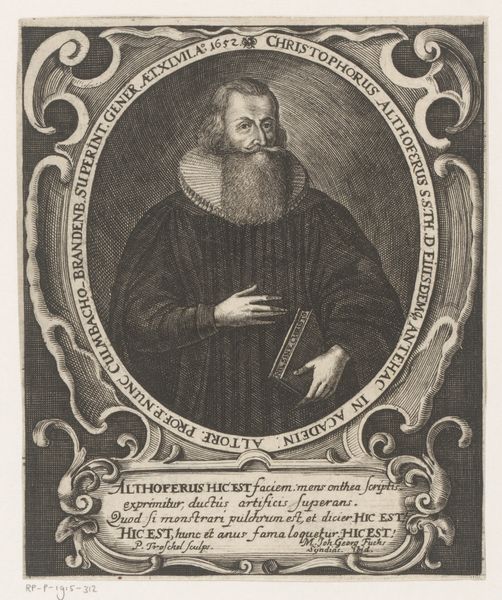
engraving
#
portrait
#
baroque
#
engraving
Dimensions: height 277 mm, width 178 mm
Copyright: Rijks Museum: Open Domain
Editor: Here we have "Portret van Nicolas de Dijon," an engraving by Simon Thaddäus Sondermayr, created sometime between 1727 and 1751. It feels quite formal and a bit austere, a study in line work, and the textural quality achieved through the engraving process is quite striking. What stands out to you most about it? Curator: I find myself drawn to the physical act of creation, how Sondermayr's hand shaped this image through the deliberate use of metal tools and acid. The material reality of engraving--the copper plate, the burin, the corrosive acid--all directly shaped how this subject, likely a religious figure based on his garb and the crucifix, was presented and consumed by society. Look closely; the subtle differences in line weight reflect a deep understanding of materiality. How do you think this medium affected the accessibility and audience for this image versus a painting? Editor: That's a good question. I suppose an engraving could be reproduced more easily, making it available to a wider audience beyond just the wealthy elite who could afford a painted portrait. So, the material process inherently democratized the image somewhat? Curator: Precisely. The reproducibility inherent in engraving shifted the dynamics of image consumption. While it's still a skilled craft, the multiple copies allowed for wider distribution and, importantly, for the standardization of certain images and narratives. How might the relative permanence of the copper plate impact the lifespan and influence of the artwork? Editor: It seems like that would guarantee longevity and broad reach across regions over a longer duration, since paintings can be restricted geographically. Seeing it this way makes me really think about the connection between artistic practice, dissemination of knowledge, and how that affects a society’s values. Curator: Exactly! By studying these prints and thinking critically about their materials and mode of production, we gain valuable insight into the world of Nicolas de Dijon.
Comments
No comments
Be the first to comment and join the conversation on the ultimate creative platform.
